Are you tired of your out-of-date sliding doors? Maybe you’re tired of forcing your sliding doors to work properly? For these reasons and more, you are probably considering converting those ugly sliders into beautiful French doors. If so, then you’ve come to the right place! We’ve done all of the research and included instructions on converting your sliders to French doors.
Here are the steps on how to convert sliding doors to French doors—
- Purchase a French door that will fit into your existing opening.
- Remove the trim around the existing sliding doors carefully; it can be re-used.
- Remove screens, then glass door panels, then slider frame.
- Install the new French doors into the opening (follow manufacturer specifications).
- Re-install trim around doors.
So many people wonder if it’s possible to convert your old sliding glass doors to beautiful French doors. But is it possible? Is it expensive? How do you do it? The answers to these questions and more have been carefully researched for you right here in this post. Read on for detailed instructions on how to convert your sliders to French doors!
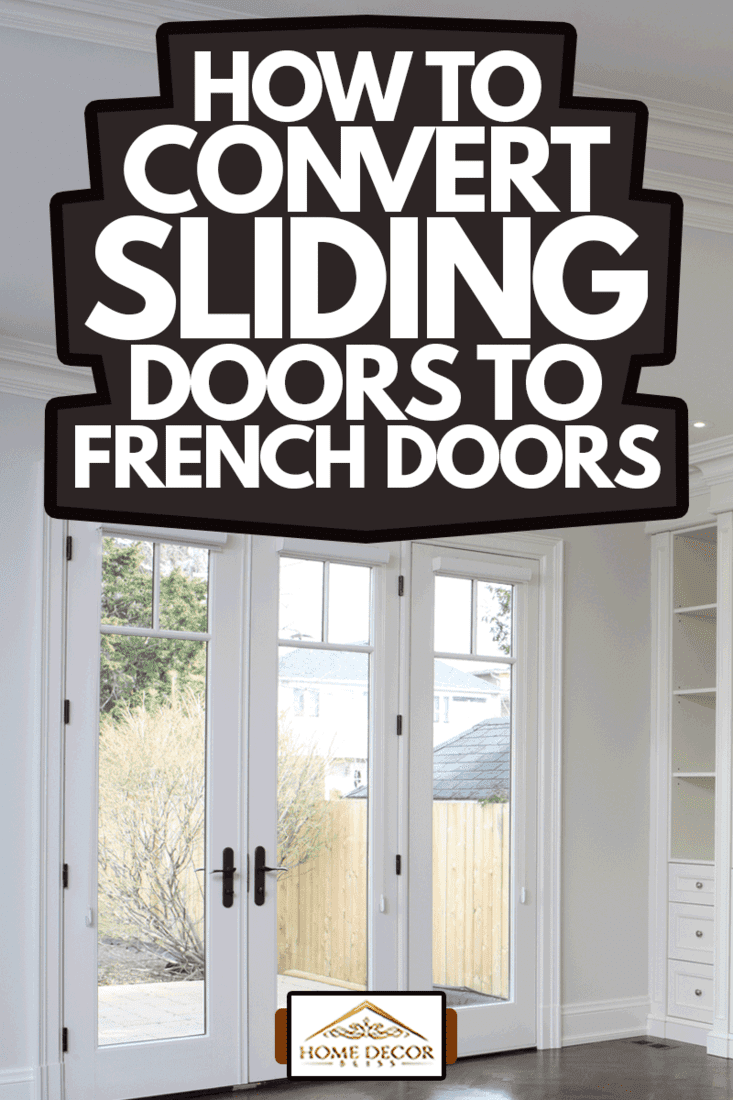
Steps to Convert your Sliding Doors to French Doors
First, measure the size of your current sliding door opening and buy a new set of French doors of the same size. Make sure they are sold complete on a pre-hung frame.
Tools Needed:
Top Row, Left to Right
- Caulking and caulking gun
- Hammer
- Level
- Square
- Sturdy work gloves
Bottom Row, Left to Right
- Wooden shims
- Safety Glasses
- Electric Drill (optional screwdrivers)
- Crowbar
- Safety razor/Putty knife
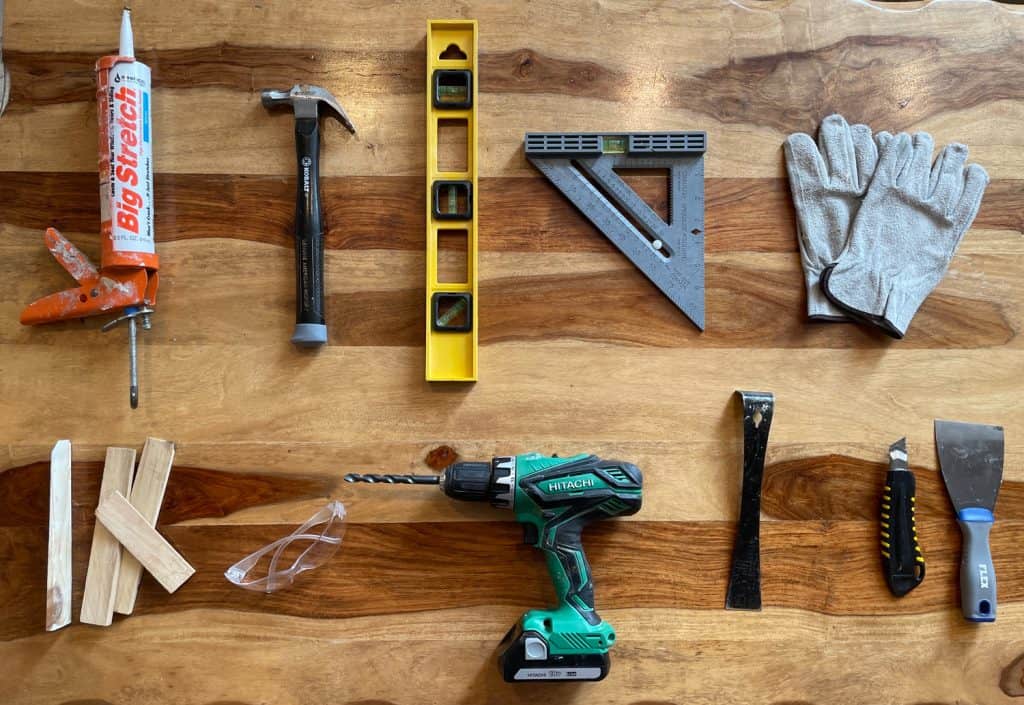
We may include affiliate links and curated AI content to highlight top design styles.
These common tools will help you convert your sliding doors to French doors.
Removing the Doors
- Remove the trim from around the existing sliding doors.
- The trim is the framing around the door. Use a safety razor blade to cut and loosen the trim from the wall, then carefully use a pry-bar to detach and lift the trim off in one piece. A putty knife will help detach and cut as well.
- Lift up and pull out the screens, bottom first.
- You may need to loosen the screw at the top corner of the screen door to adjust the wheel height, thus allowing room for the screen to be lifted from the frame.
- Loosen the screw at the bottom of the moving sliding door (on the inside edge), then lift up and pull out the sliding glass door, bottom first.
- Loosen the screw at the base of the fixed glass door, and remove any screws holding it into place along the inside edges. Once it is loose, slide it to the opposite side, lift, and pull it out bottom first.
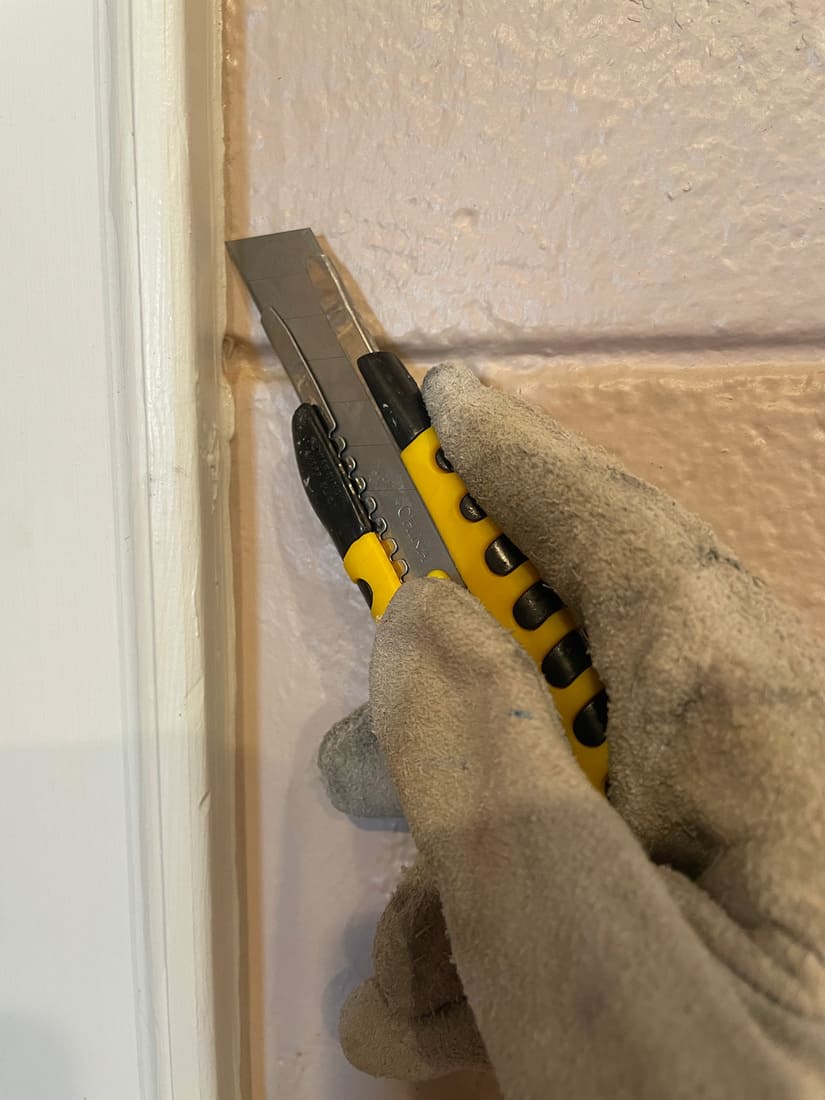
In this photo, a safety blade is used to cut the caulking and paint away from the trim.

Here we see the trim being carefully removed in one piece to allow for re-use.
Removing the Frame
- Remove any screws from the inside of the frame; check along the entire frame inside and out.
- Detach any material that attaches the sliding door frame to the frame of the house. Flashing and siding may be carefully removed from around the frame area only.
- Insert a pry-bar all along the edges to check that the sliding door frame is completely detached from the house frame and walls.
- Begin pulling the frame out by the top; work slowly. If it sticks, check for and remove additional screws. The frame may also be glued into place, and you may need to exert force or loosen it with the pry bar to push it out.
For a complete walk-through of the removal process, take a look at this excellent video.
Installing the French Doors
- Follow the manufacturer’s instructions and specifications for insulation and installation.
- Once you have inserted the frame into the existing opening, use a square edge ruler and a level to verify that the frame is perfectly square and level.
- Use shims (thin wedges of wood) to lift and move the door into a square and level position.
- When the door is leveled and squared into the opening, cut off any pieces of the shims sticking out, and fasten it using the manufacturer’s directions.
You can find some links to tools and additional information on “How to Install French Doors in an Existing Opening.”
Replacing the Trim
- Replace any flashing and insulation around the door frame using your city’s building code specifications.
- Re-install your trim, install new trim around the edges of the new door, caulk around the edges for a clean look. This also prevents insects and weather intrusion.
Voila!
How much does it cost to replace a sliding door with French Doors?
The price of replacing a sliding door with a French door depends on many factors, but generally, you can expect to pay anywhere from $500 to $3000 just for the doors themselves.
French doors installed by a professional can range from $2000 to $7000 depending on where you live, and the difficulty of the installation. Companies like Anderson Windows can even charge up to $16,000 to replace one sliding door with their specialty material French doors.
We’ve listed some of the things that affect the price here:
- Double-paned glass
- Sliding versus swinging versus folding French doors
- Integrated blinds
- Impact-resistant glass
- Three-point locking system
- Ease of access to installation
- Wood versus manufactured materials
Can French Doors Have Screens?
It seems like in every movie or photo where people open French doors; there are no screens! However, you can have screens on French doors. The screens are simply another set of doors on the opposite side and open in the opposite direction from the doors themselves.
Screens or no screens?
If you are installing French doors out to a patio or off a kitchen, you may envision them wide open as you enjoy the morning breeze with a cup of coffee. But you probably don’t want insects flying in and out. If this scenario sounds like what you want, then you need to consider French doors with screens.
If you want screens, you will need to calculate for more space for the screens to swing open and closed. French doors with screens will open inward, and the screens will open out. If this is not possible for your space, you can opt for sliding glass ‘faux’ French doors.
With ‘faux’ French doors, the doors are still sliders, but they have the look of French doors. The screen is then incorporated just like a sliding door screen.
Whatever option you choose, you can definitely have screen doors on your French doors.
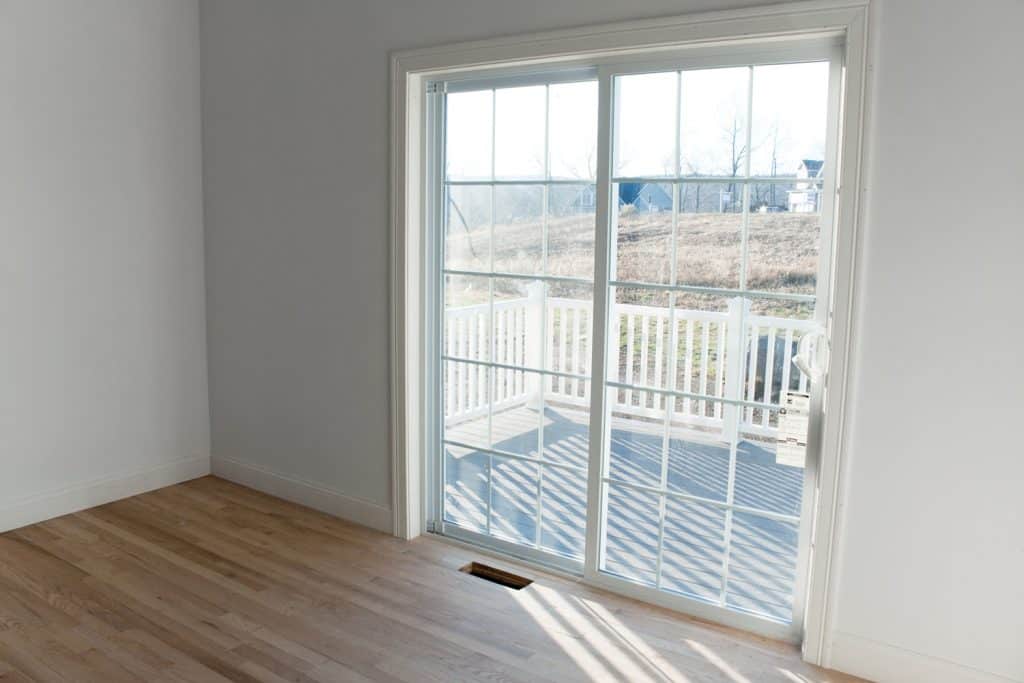
A ‘faux’ French door look on a sliding door.
Do Both sides of French Doors open?
Both sides of French doors do open up completely. For convenience in entering and exiting, one door is latched at the top and bottom on the inside edge of the door. The latches allow you to keep one door attached to the frame, while the other door is like a standard door for casual use.
If you want to have both sides of the French doors open, open the first door, then unlatch the top and bottom of the second door to open it.
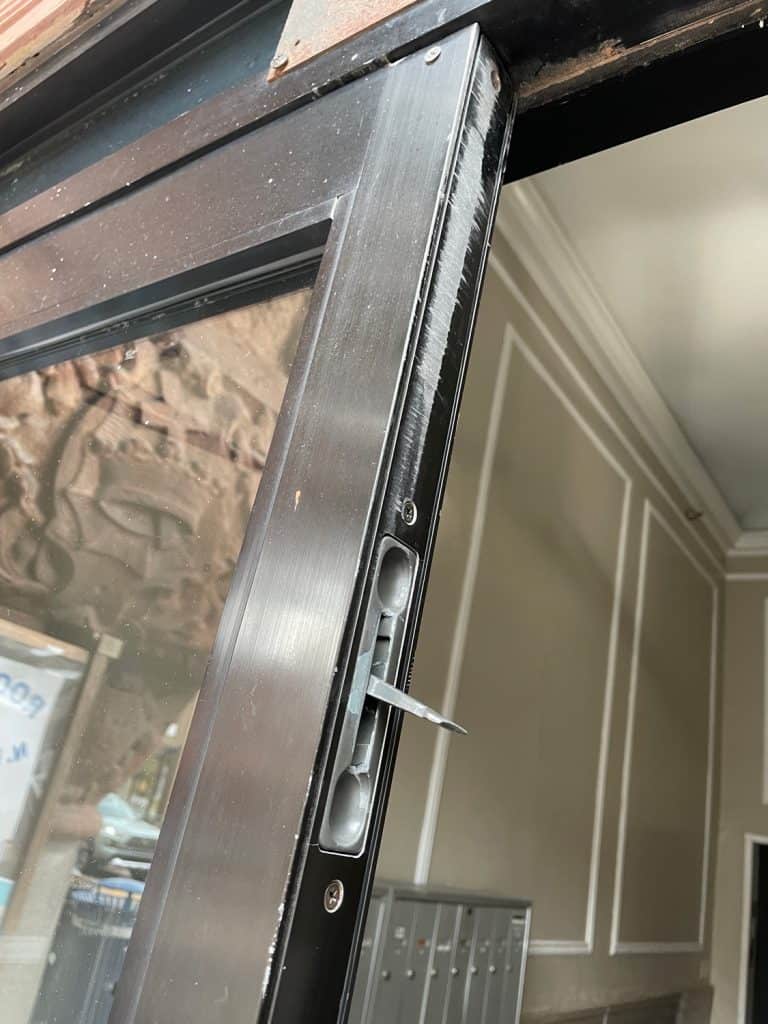
The top latch of the fixed side of the French Door; the bolt slides up via a hidden latch in the door.
Are French Doors Safer Than Sliding Doors?
French doors are neither more nor less safe than sliding doors. What makes a door safe is the strength of the materials from which the door is made and a sound installation.
Make sure that your door is made from solid wood or a specialty manufactured material made to resist force, weather, and age. Install the door frame securely to the frame of the house with the correct fasteners, and make sure the surrounding trim is securely attached.
Choose impact-resistant glass if you are installing a French door as your front door. You can also install something called a Three-point locking system. These are additional locks that are incorporated at the top and bottom of the doors and metal framing on the lock edge. They provide superior resistance to force.
Following these tips will all assure that your French doors keep you safe.
For more safety information, read Are French Doors Safe? [And How To Improve Their Security]
Final Thoughts…
Converting sliding doors into French doors really does update and beautify your home. If you choose to do it yourself, you can ask a handy friend to help. There are many options for French doors, so take some time to decide what your needs are before deciding what you want.
Whatever you choose, you’ll love the ease and look of French doors!




What do you do when the opening is 2ftx2ft larger than the max french door size?
frame out the gap add all the siding trim house wrap sheetrock etc.
In your scenario, I’m assuming you are looking to use a standard french door that can be purchased at a hardware store.
Therefore, you will have to frame the space to the size of the door, and reframe the extra space as more walls, including wood, insulation, sheetrock inside, siding and trim outside.
In a different scenario, you could frame-in the center of the opening for the standard french door and leave openings on each side to install custom windows – or do a window on one side and butt the door up to the other. It might be more cost effective and allow more light in than closing up the wall.
Obviously, option 3 is to get a custom door that will fit into the opening, and although it might be expensive with a standard window contractor, you can call around and search the internet for someone to make it for less and install it yourself.
For example, rather than pay a bathroom contractor $5,000 to install 2 large glass panels in my DIY shower, I called around to glass manufacturers and purchased the same glass for $500, including shipping. Then I installed it myself with a drill and special bits that drill through ceramic tile. I borrowed heavy duty suction cups to lift and move the glass into place (with help from a friend) total cost about $550.